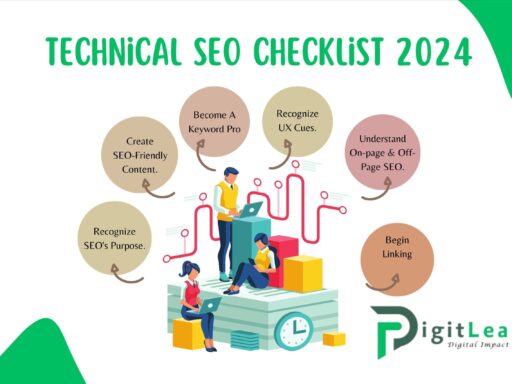Keyword Stuffing in SEO: What is It, Types & How to Avoid
Introduction
In the world of search engine optimization (SEO), keywords play a crucial role in helping your content rank higher on search engine result pages (SERPs). However, overusing these keywords—known as keyword stuffing—can do more harm than good. Not only does keyword stuffing lead to poor user experiences, but it can also result in penalties from search engines like Google, damaging your site’s visibility and credibility.
This guide will explore the concept of keyword stuffing in SEO, its various types, and most importantly, how to avoid it while still optimizing your content for search engines.
What is Keyword Stuffing?
Keyword stuffing refers to the practice of overloading a web page with keywords or phrases in an attempt to manipulate search engine rankings. While it was a common SEO technique in the early days of search engines, advancements in search algorithms have made it an outdated and risky strategy. Today, search engines prioritize quality, relevant content over excessive keyword use.
Keyword stuffing often results in content that feels unnatural or spammy, leading to a poor user experience. If a search engine detects keyword stuffing, it can penalize the website, reducing its ranking or even removing it from the index entirely.
Why is Keyword Stuffing Harmful?
Keyword stuffing can be harmful in several ways:
- Negative Impact on User Experience: Content that’s filled with repetitive keywords often reads poorly, making it hard for users to understand or engage with the information. This can lead to a higher bounce rate, as users leave the page quickly.
- Search Engine Penalties: Search engines, particularly Google, have strict guidelines against keyword stuffing. Websites that engage in this practice risk being penalized, which can result in lower rankings or even removal from search results.
- Decreased Credibility: When users encounter spammy content with excessive keywords, they may view the site as untrustworthy, affecting the brand’s reputation.
- Hinders Long-Term SEO Success: While keyword stuffing may provide short-term boosts in ranking, the long-term consequences can be devastating. Search engines continually update their algorithms to improve user experience, so manipulating rankings through keyword stuffing is not a sustainable strategy.
Types of Keyword Stuffing
There are different ways in which keyword stuffing can occur, and recognizing them is the first step in avoiding this harmful practice.
1. Visible Keyword Stuffing
Visible keyword stuffing occurs when keywords are repeated excessively in the visible content of the page. This includes:
- Overusing the same keyword in headings and paragraphs.
- Adding long lists of keywords without proper context or structure.
- Repeating the same keyword in unnatural places just to increase its density.
Example: “Buy the best shoes. Our shoes are the best shoes you can buy because these shoes are made with the best materials for shoes.”
2. Hidden Keyword Stuffing
Some websites hide keywords within the page to manipulate rankings without affecting the content’s appearance. This is done by:
- Using white text on a white background.
- Hiding keywords in the website’s code (e.g., in meta tags or CSS).
- Stuffing keywords in comment tags or alt text for images unnecessarily.
Example: Using a hidden paragraph with a string of keywords unrelated to the content.
3. Meta Tag Keyword Stuffing
Keyword stuffing can also occur in the meta tags of a webpage, particularly in the meta description and meta keywords. While meta keywords are largely ignored by modern search engines, overstuffing them can still harm the site.
Example: Including the same keyword repeatedly in the meta description or keywords tag: “Buy cheap laptops, laptops for sale, best cheap laptops, affordable laptops.”
How to Avoid Keyword Stuffing
Keyword stuffing is easily avoidable if you focus on producing high-quality, relevant content that naturally incorporates keywords. Here are some strategies to help you avoid keyword stuffing while still optimizing your content for SEO:
1. Focus on User Experience
When creating content, prioritize your audience’s needs and interests. Ask yourself, “Does this content provide value to the reader?” Ensure that your content is easy to read, engaging, and informative. By focusing on user experience, your keyword use will naturally become more balanced.
2. Use Keywords Strategically
While keywords are essential for SEO, they should be used strategically. Aim for a keyword density of around 1-2%, meaning your primary keyword should appear naturally every 100-200 words. Use variations of the primary keyword (known as LSI keywords) to add diversity to your content and help search engines understand your content’s context.
3. Optimize for Search Intent
Ensure your content addresses the search intent behind the keyword. Search engines are increasingly sophisticated in understanding user queries, so creating content that directly addresses the searcher’s intent is more valuable than overusing keywords.
4. Use Synonyms and Variations
Instead of repeatedly using the same keyword, incorporate synonyms and related terms to make your content flow more naturally. This practice not only avoids keyword stuffing but also helps with semantic SEO by allowing search engines to understand the context of your content better.
Example: Instead of using “best laptops” repeatedly, try variations like “top-rated laptops,” “affordable notebooks,” or “high-performance laptops.”
5. Optimize Other SEO Elements
Make sure you’re optimizing other important SEO elements beyond keyword density:
- Title Tags: Include your main keyword but keep the title concise and engaging.
- Meta Descriptions: Write a compelling meta description that naturally includes your keyword.
- URL Slugs: Keep URLs short and include your primary keyword.
- Image Alt Text: Use descriptive alt text for images that include relevant keywords but avoid stuffing.
6. Write for Humans, Not Robots
Remember that SEO is about improving user experience. Write content for real people, not search engine crawlers. By doing so, you’ll naturally avoid overloading your content with unnecessary keywords and instead focus on delivering value to your audience.
7. Use Natural Language Processing (NLP)
Search engines like Google now use Natural Language Processing (NLP) algorithms to better understand the context of your content. Focus on writing in a conversational and natural tone. Tools like Google’s BERT algorithm can process natural language and reward content that reads more naturally.
Best Practices for Avoiding Keyword Stuffing
- Perform thorough keyword research to identify a range of relevant keywords and phrases.
- Use long-tail keywords to target more specific queries.
- Write in-depth content that thoroughly covers the topic rather than focusing on hitting keyword quotas.
- Utilize tools like Yoast SEO or Surfer SEO to check your keyword density and content optimization.
Conclusion
Keyword stuffing may have worked in the early days of SEO, but today it’s a harmful practice that can hurt your website’s performance and rankings. By focusing on creating high-quality, relevant content and using keywords strategically, you can avoid keyword stuffing while still optimizing your content for search engines. Remember, the key to SEO success lies in providing value to your audience, not in manipulating search engine algorithms.






